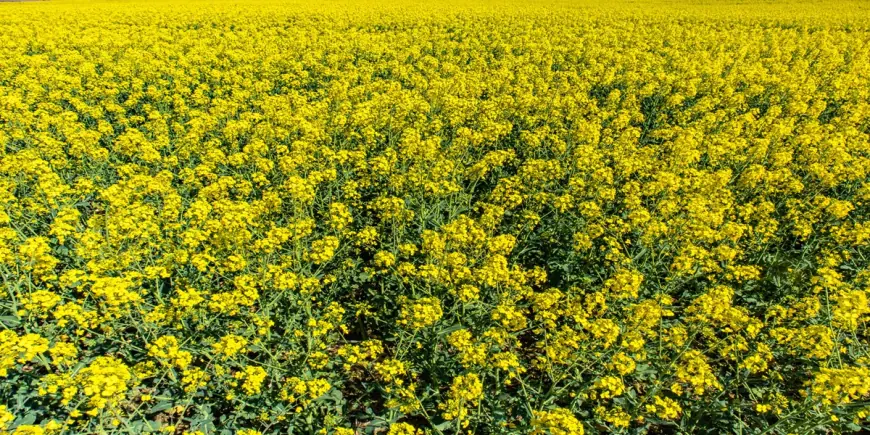Mustard Farming in India: A Profitable Crop
Mustard farming in India is profitable, yielding oil-rich seeds for mustard oil. With ideal climate, soil, and proper techniques, farmers can achieve high yields and income.

Mustard farming is one of the most important agricultural activities in India. It is mainly grown for its oil-rich seeds, which are used to produce mustard oil, a staple in Indian kitchens. The crop is easy to cultivate and highly profitable. With proper techniques, farmers can achieve good yields and maximise their income.
Best Climate and Soil for Mustard Farming
Mustard is a winter crop that grows best when sown between October and November. It thrives in temperatures ranging from 10°C to 25°C and requires moderate rainfall of 350-450 mm. Well-drained loamy or sandy loam soil with a pH of 5.5-8.0 is ideal. Heavy clay soils should be avoided as they retain excess water, which can harm the plants.
Soil Preparation and Sowing
Before sowing, the land must be well-prepared by plowing 2-3 times to loosen the soil. The John Deere 5045d tractor is an excellent choice for plowing, as it helps break hard soil layers and improves aeration. Adding organic manure before sowing enhances soil fertility. Mustard seeds should be sown 2-3 cm deep with a row spacing of 30-45 cm to ensure proper growth and easy harvesting.
Irrigation and Crop Management
The first irrigation is required 20-25 days after sowing, followed by 2-3 more irrigations during flowering and pod formation. Overwatering should be avoided to prevent fungal diseases. A balanced application of nitrogen, phosphorus, and potassium is essential for good growth. Weeds should be controlled manually or using herbicides like pendimethalin. Common pests like aphids and painted bugs can damage the crop, so neem-based pesticides or insecticides should be used.
Harvesting and Storage
Mustard is ready for harvest in 100-120 days. When the pods turn yellow, the crop is harvested using sickles or combine harvesters. After harvesting, the plants are dried in the sun before threshing. The seeds are then cleaned and stored in dry conditions to prevent moisture damage.
Conclusion
Mustard farming is a profitable venture due to the high demand for mustard oil. With proper soil preparation using tractors like the John Deere 5405, efficient irrigation, and pest control, farmers can achieve better yields. Government subsidies and MSP support also help farmers make mustard farming a sustainable and rewarding practice.












